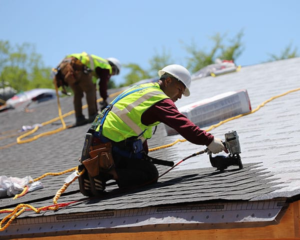Roofers Columbus GA is a part of the construction industry and focus on constructing, maintaining, and repairing roofs. They can work as independent contractors or employees of roofing contractors and general construction companies.
They must be licensed and insured, have good customer service skills, provide information about their company’s background, and demonstrate knowledge about roofing materials and techniques.

Storm chasers are weather enthusiasts who travel to severe storm areas for dramatic photographic and scientific data. Some are well-trained professionals, while others pursue this hobby out of fascination with storms and their formation. Chasers generally work independently, although institutions have sponsored some in the past. Research chasing is usually carried out in vehicles outfitted with various meteorological instrumentation and hail-catching apparatus. Vehicles can be commanded remotely from a central control center using weather radar.
Observing the sky for telltale signs of severe storms is essential to determining whether they may develop into a tornadic supercell. Large updrafts are the first sign, as are indications of a rotating wall cloud or mesocyclone. When the conditions are right, a visible funnel or tornado will often follow these signs.
While some reasons drive people to become chasers, the primary motivation is usually scientific curiosity. Many chasers have had a personal encounter with a terrible storm or tornado in their youth, feeding their fascination with severe weather phenomena. Others simply find it exhilarating to work out the puzzle of a tornado’s formation.
The profile of the chaser rose significantly following a few significant spurts: in 1978 with the broadcast of a documentary on the PBS series Nova; in 1985 with the release of the movie Twister, which gave viewers a highly stylized and action-oriented glimpse of the hobby; and in 1996 with the theatrical release of the film Doppler on Wheels, which featured two competing teams of chasers zooming around Oklahoma in their race to find tornadoes.
Because of the risks involved, it is important for those interested in pursuing storms to be guided by trained and experienced experts. Without such guidance, chasing can quickly turn into an unsafe and dangerous hobby.
Some of the drawbacks to hiring storm chasers include their reluctance to give homeowners guarantees or warranties for their repair work, as they typically operate on a cash-only basis. They also tend to move on from disaster areas relatively quickly, leaving homeowners with hasty and possibly substandard repairs. Another problem is their lack of familiarity with local building codes and regulations, which can leave homeowners vulnerable to post-repair problems.
General Contractors
A general contractor (GC) is the lead professional on construction and renovation projects. They oversee teams of subcontractors that carry out the specialized aspects of each job. GCs are responsible for procuring materials, obtaining permits, and making sure that all work meets city specs and project timelines. They also handle administrative tasks, such as scheduling and payroll, and enforce safety standards on site.
The role of a GC is as much a matter of business acumen as it is craftsmanship. They are the maestros of a construction site, orchestrating all of the moving parts to produce a harmonious and quality result. Their expertise coalesces multiple, sometimes conflicting, project facets into a singular whole, and they are unflappable when obstacles arise.
As a result, their responsibilities are vast and varied. They review drawings, scopes of work and specifications, then collect quotes from a number of qualified specialized subcontractors for each item of work needed to be completed. The GC then adds their own overhead costs to these quotes and submits a final quote to the project owner.
GCs are licensed by the state in which they operate, as well as insured for workers compensation and general liability. In addition, they may need to obtain a building permit and comply with local zoning codes. GCs often manage entire construction projects and often hire their own employees. They may also have relationships with trade contractors and suppliers.
For homeowners, a reputable GC can save you time and money by taking the guesswork out of major home improvement projects. They can help you find the right professionals, provide expert advice and guidance, and ensure that the project is completed on time and on budget.
Be wary of unscrupulous individuals posing as licensed general contractors. These scam artists tend to emerge in large numbers after disasters like hurricanes or floods and use high-pressure tactics to get your business. When hiring a general contractor, ask for references and licenses and always check online reviews before handing over your hard-earned money. You should also consider getting a pre-renovation inspection from a reputable general contractor to assess any potential problems and to obtain a rough estimate before starting any work on your home.
